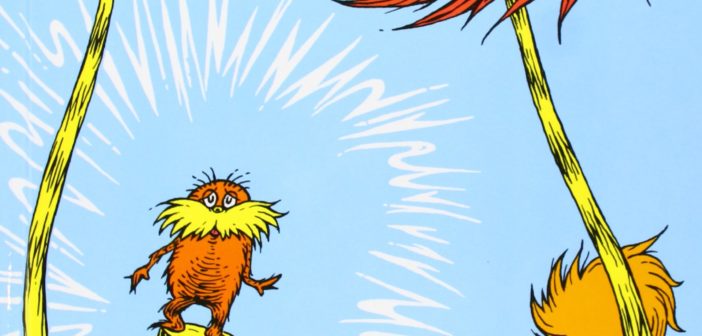A book that speaks for the trees, for the trees have no tongues…
Skeptics often scoff at environmentally themed books and films. However, one local bookworm recommends a classic that will win over even the most cynical of readers: The Lorax.

“Who doesn’t like Dr. Seuss?” Kenneth M. Kozel, who has been the director of Libraries at Keystone Academy Beijing since he arrived here two years ago, says of the legendary children’s author who penned The Lorax in 1971. To this day, the book remains a staple in numerous school curriculums around the world, thanks to its gripping ecological themes. He adds that the book’s straightforwardly entertaining storyline and vivid illustrations are also a huge draw for readers young and old.
“The illustrations really make one believe they are in the land of the Lorax, who speaks for the Truffula Trees,” he says, adding that other characters like “Once-ler, Bar-ba-loots, Truffula Trees and of course Thneed are hard to forget. The story is fun to read, engaging and important.”
Kozel says The Lorax’s chief attribute is its: “timeless tale of pollution, caring for the environment, ambition, greed, regret and hope. I also think The Lorax great story to introduce children to the concept of being environmentally aware and accountable.”
Kozel recalls the book making a strong impression on him as a young boy. While detractors complain about the The Lorax’s arguably bleak depiction of an environmentally ravaged community, Kozel points out: “The book does end on a hopeful note.” It has an important caveat in its last sentence: “UNLESS someone like you (the reader) cares a whole awful lot, nothing is going to get better. It’s not.”
The Lorax also became an important part of Kozel’s professional life. He and his fellow educators have often discussed how “authors like Dr. Seuss, Roald Dahl, and Charles Schultz resonate with all ages and are truly timeless. They have a gift for rhyme, storytelling, and conveying simple yet true messages.”
However, Kozel admits that teachers and parents may love The Lorax for more practical reasons, explaining: “All Dr. Seuss titles are great ‘read aloud’ books. They can be read independently or best read at story time between parents and children, or among siblings.” On top of that, Kozel also loves how Seuss’ works “Can be re-read and enjoyed many times.”

Leafing through an engaging environmentalist tale
Every Beijinger fantasizes about clean air and blue skies, but many of us overlook another key benefit of bettering our environment. This lesson is colorfully conveyed in Peter Brown’s The Curious Garden, a longtime favorite of Bonnie Brewer Elsayed, the Canadian elementary librarian at the Canadian International School of Beijing (CISB). She implores readers to “look closely” as they thumb through this lushly illustrated book, and see that as the characters adopt eco-friendly habits “it’s not just the pollution that changes, but the details reveal that people’s lifestyles change as well. The last page is a copy of the first, but without the pollution, and kids love to flip from the back to the front to compare the two illustrations.”

Indeed, those carefully drawn images are a perfect way for Elsayed to turn her elementary students into lifelong environmentalists. “A picture book may not be as fact-filled as a non-fiction book, but the strength in this book is that it shows how one person, even a child, can make a difference in his community,” she says, adding that the illustrations clearly convey to young learners how: “Actions that may seem small can lead to big results. This book can inspire families to take their own efforts to improve their environment, such as planting gardens and creating less waste, to uncover the beauty that is hidden under the pollution.”
Many of Elsayed’s students share her enthusiasm The Curious Garden, approaching her with a copy in hand and saying: “Remember you read this to us last year?” The librarian and her students have also frequently chatted about how Liam, Garden’s protagonist, successfully saved his city from its smoggy fate, turning it into a leafy paradise. “We have great discussions about how Liam was able to change his city, and how the changes made life better for everyone,” she says, adding that those youngsters “love looking at the pictures as the story goes on, and they love identifying the changes from page to page. The book is a great segue to a discussion about what we can do to make our community a better place to live.”
Elsayed says any parents who are intrigued by The Curious Garden’s esteemed reputation should know that: “It’s a lovely book to read together with your child.” She also enthusiastically advises those families to: “Take your time to observe and enjoy the little details in the illustrations, and talk together about what you see.”
This article originally appeared on page 40 of the beijingkids March 2016 issue. Click here to read the issue for free on Issuu.com. To find out how you can get your own copy, email distribution@truerun.com.
Photos: Courtesy of Keystone and CISB




